Kia Niro vs Skoda Fabia – Differences & prices compared
Compare performance, boot space, consumption and price in one view.
Find out now: which car is the better choice for you – Kia Niro or Skoda Fabia?
The Kia Niro (SUV) comes with a Full Hybrid or Plugin Hybrid engine and Automatic transmission. In comparison, the Skoda Fabia (Hatchback) features a Petrol engine with Manuel or Automatic transmission.
When it comes to boot capacity, the Kia Niro offers 451 L, while the Skoda Fabia provides 380 L – depending on how much space you need. If you’re looking for more power, decide whether the 180 HP of the Kia Niro or the 150 HP of the Skoda Fabia suits your needs better.
In terms of consumption, the values are 2.40 L per 100 km for the Kia Niro, and 4.90 L for the Skoda Fabia.
Price-wise, the Kia Niro starts at 29100 £, while the Skoda Fabia is available from 16900 £. Compare all the details and find out which model fits your lifestyle best!
In the compact car showdown, the Kia Niro stands out with its hybrid powertrain option, offering eco-conscious consumers a stylish, efficient ride. Meanwhile, the Skoda Fabia impresses with its robust build quality and spacious interior, making it ideal for city commutes and small families. Each model brings unique strengths, but the Niro’s innovation in fuel efficiency contrasts with the Fabia’s practical approach, providing diverse choices for today's drivers.
Kia Niro
The Kia Niro presents itself as a versatile and eco-friendly SUV, blending a stylish design with advanced hybrid technology. Its spacious interior offers comfort and practicality, making it ideal for both city driving and longer journeys. With a focus on efficiency and sustainability, the Niro is a compelling choice for environmentally conscious drivers.
details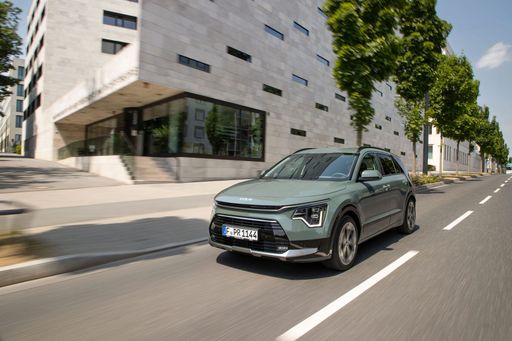 @ press.kia.com
@ press.kia.com
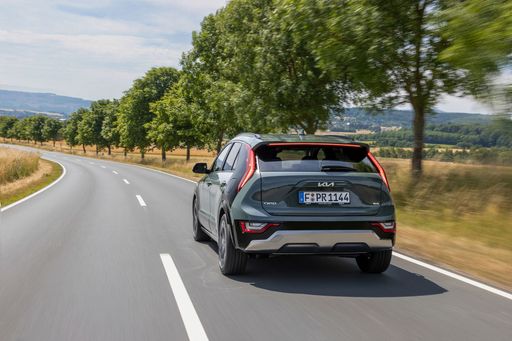 @ press.kia.com
@ press.kia.com
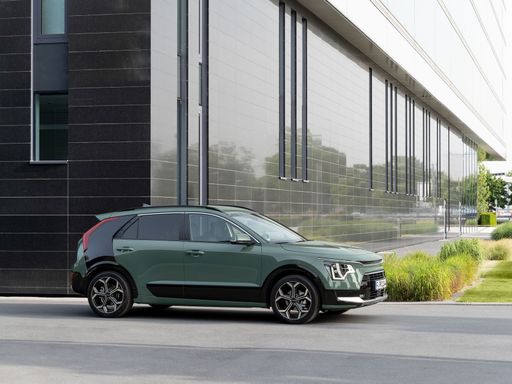 @ press.kia.com
@ press.kia.com
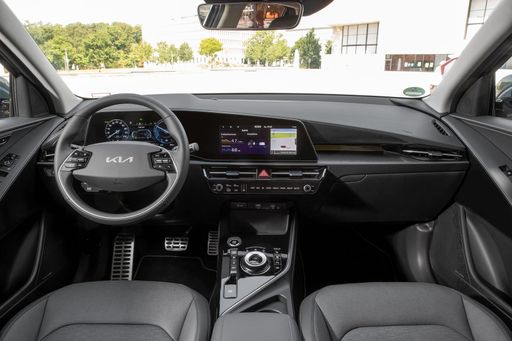 @ press.kia.com
@ press.kia.com
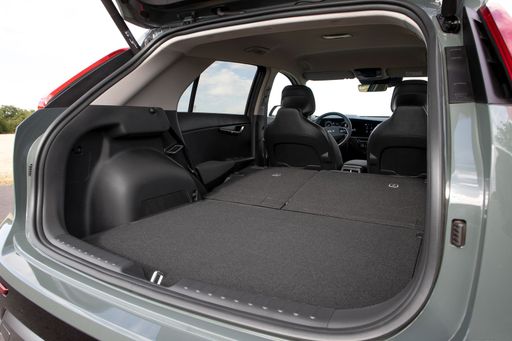 @ press.kia.com
@ press.kia.com
Skoda Fabia
The Skoda Fabia presents itself as a practical and stylish hatchback, perfect for urban driving and beyond. Its interior is designed with comfort and functionality in mind, offering ample space and intuitive controls. With a focus on efficiency, the Fabia provides a smooth driving experience, complemented by its crisp and modern exterior design.
details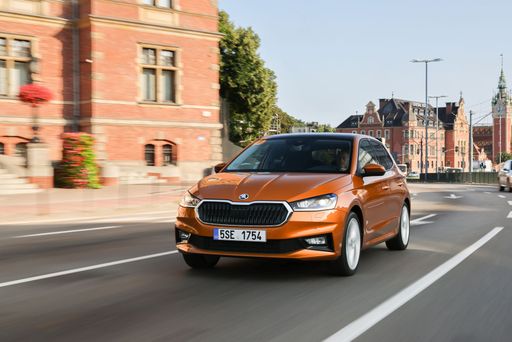 @ Skoda Presse Deutschland
@ Skoda Presse Deutschland
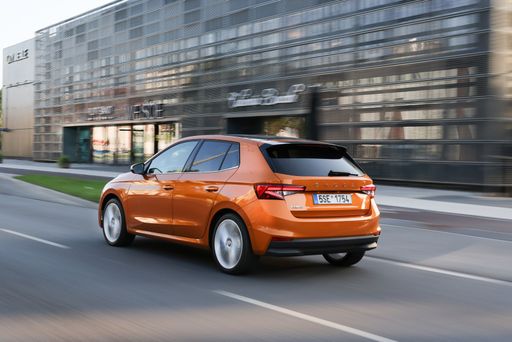 @ Skoda Presse Deutschland
@ Skoda Presse Deutschland
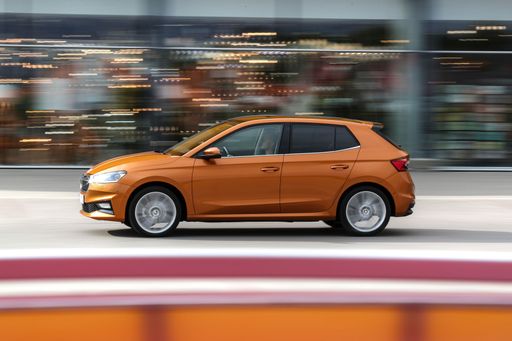 @ Skoda Presse Deutschland
@ Skoda Presse Deutschland
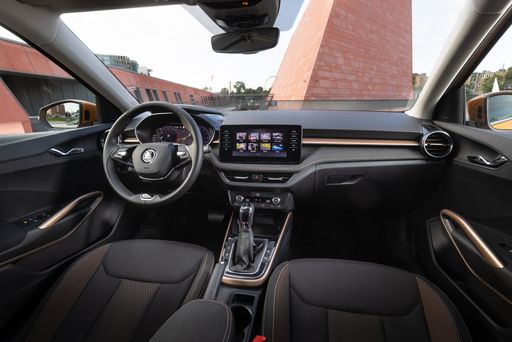 @ Skoda Presse Deutschland
@ Skoda Presse Deutschland
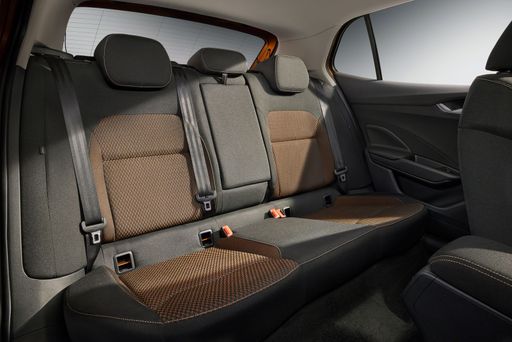 @ Skoda Presse Deutschland
@ Skoda Presse Deutschland
The Battle of Versatility: Kia Niro vs Skoda Fabia
As the automotive world continues to evolve, manufacturers are constantly challenged to deliver vehicles that meet the diverse needs of drivers. The Kia Niro and Skoda Fabia are two such contenders, each offering unique attributes tailored to specific preferences. This article dives into a detailed comparison, examining their technical specifications and innovative features to help potential buyers make an informed decision.
Compact Power: Engine and Transmission
Both the Kia Niro and the Skoda Fabia showcase different approaches to powertrains. The Niro offers a sustainable edge with its hybrid options: a Full Hybrid and a Plug-In Hybrid. With a 4-cylinder, 1.6-liter engine producing between 129 and 171 horsepower, it pairs this with dual-clutch automatic transmission to deliver a smooth drive. The hybrid variants emphasize efficiency, registering fuel consumption of 4.4 L/100km and as low as 1 L/100km with the Plugin Hybrid, thanks to its electric range capability of up to 65 km.
In contrast, the Skoda Fabia embraces a more traditional approach with its petrol engines ranging from 3 to 4 cylinders. The power output varies from 80 to 150 horsepower, with both manual and dual-clutch automatic transmissions available. Its compact nature ensures a lively performance with acceleration times as low as 8 seconds from 0 to 100 km/h. The Fabia achieves a fuel consumption range of 5.0 to 5.5 L/100km, catering to drivers who prioritize spirited drives over sheer efficiency.
Design and Space: Meeting Diverse Needs
The Kia Niro boasts a spacious SUV body type. Measuring 4420 mm in length, 1825 mm wide, and 1545 mm in height, the Niro accommodates a comfortable seating arrangement for five passengers. Its trunk offers a generous 451 liters of cargo space, slightly reduced in the Plug-In Hybrid version to 348 liters due to battery placement. The Niro's design prioritizes comfort and practicality, making it an ideal choice for families or adventurous travels.
The Skoda Fabia, a compact hatchback, stands at 4108 mm in length, 1780 mm wide, and 1459 mm in height. Despite its smaller footprint, it still provides ample space for five passengers. Its trunk capacity is 380 liters, catering thoroughly to daily errands and weekend escapes. The Fabia's design highlights urban agility and compact convenience, making it a preferred option for city commuters and those with space constraints.
Efficiency and Eco-friendliness
When it comes to environmental impact, the Kia Niro shines with its hybrid technology, reporting CO2 emissions as low as 19 g/km for the Plugin variant. It holds a B CO2 Efficiency Class, underscoring its commitment to reducing carbon footprints.
Meanwhile, the Skoda Fabia, though not a hybrid, remains competitive with CO2 emissions ranging from 113 to 124 g/km, achieving a C and D CO2 Efficiency Class depending on the model. This performance, while less green than the Niro, still meets the demands of eco-conscious petrol enthusiasts.
Performance and Handling
Both models offer front-wheel drive, ensuring a stable and familiar handling characteristic. The Kia Niro's maximum speed hovers around 160 km/h, with acceleration competence noticeable in its 10.4-second 0-100 km/h time for the Plugin Hybrid variant. Its turning torque of 265 Nm further enhances its ride quality, making it a robust option for those requiring reliable everyday performance.
On the other hand, the Skoda Fabia excels in speed, capable of reaching up to 225 km/h depending on the engine choice. With a potential to accelerate from 0 to 100 km/h in 8 seconds, it provides an engaging drive for enthusiasts who favor a punchy, responsive hatchback over a leisurely cruise.
Conclusion: Tailored Choices
The Kia Niro and Skoda Fabia cater to different segments of the automotive market. The Niro stands as a testament to Kia's hybrid advancements, offering efficiency, space, and a family-friendly SUV design. On the flip side, the Skoda Fabia charms with its sporty dynamism, traditional petrol engines, and compact utility, appealing to urbanites and young drivers seeking form with function. Ultimately, the choice between these two models depends on the individual buyer's priorities, whether they lean towards eco-efficiency or spirited driving adventures.

|

|
|
|
|
Costs and Consumption |
|
|---|---|
|
Price
29100 - 38600 £
|
Price
16900 - 26000 £
|
|
Consumption L/100km
2.4 - 4.9 L
|
Consumption L/100km
4.9 - 5.3 L
|
|
Consumption kWh/100km
-
|
Consumption kWh/100km
-
|
|
Electric Range
57 - 62 km
|
Electric Range
-
|
|
Battery Capacity
1.3 - 11.1 kWh
|
Battery Capacity
-
|
|
co2
53 - 111 g/km
|
co2
112 - 119 g/km
|
|
Fuel tank capacity
37 - 42 L
|
Fuel tank capacity
40 L
|
Dimensions and Body |
|
|---|---|
|
Body Type
SUV
|
Body Type
Hatchback
|
|
Seats
5
|
Seats
5
|
|
Doors
5
|
Doors
5
|
|
Curb weight
1474 - 1594 kg
|
Curb weight
1133 - 1238 kg
|
|
Trunk capacity
348 - 451 L
|
Trunk capacity
380 L
|
|
Length
4420 mm
|
Length
4108 mm
|
|
Width
1825 mm
|
Width
1780 mm
|
|
Height
1545 mm
|
Height
1459 mm
|
|
Payload
466 kg
|
Payload
442 - 455 kg
|
Engine and Performance |
|
|---|---|
|
Engine Type
Full Hybrid, Plugin Hybrid
|
Engine Type
Petrol
|
|
Transmission
Automatic
|
Transmission
Manuel, Automatic
|
|
Transmission Detail
Dual-Clutch Automatic
|
Transmission Detail
Manual Gearbox, Dual-Clutch Automatic
|
|
Drive Type
Front-Wheel Drive
|
Drive Type
Front-Wheel Drive
|
|
Power HP
138 - 180 HP
|
Power HP
80 - 150 HP
|
|
Acceleration 0-100km/h
9.9 - 11.4 s
|
Acceleration 0-100km/h
8 - 15.7 s
|
|
Max Speed
170 - 185 km/h
|
Max Speed
175 - 222 km/h
|
|
Torque
265 Nm
|
Torque
93 - 250 Nm
|
|
Number of Cylinders
4
|
Number of Cylinders
3 - 4
|
|
Power kW
102 - 132 kW
|
Power kW
59 - 110 kW
|
|
Engine capacity
1580 cm3
|
Engine capacity
999 - 1498 cm3
|
General |
|
|---|---|
|
Model Year
2025
|
Model Year
2024
|
|
CO2 Efficiency Class
C, B
|
CO2 Efficiency Class
D, C
|
|
Brand
Kia
|
Brand
Skoda
|
Kia Niro
The Evolution of the Kia Niro: A Glimpse into the Future
The Kia Niro has become a symbol of innovation in the hybrid and electric vehicle market. This compact SUV offers a unique blend of efficiency, performance, and style, appealing to a wide range of drivers. Kia Niro's latest model lineup showcases different powertrains, offering consumers choices between full hybrid, plug-in hybrid, and full electric options. These advancements represent Kia's commitment to sustainable mobility and cutting-edge technology.
Performance and Efficiency: Behind the Wheel of the Kia Niro
The performance range of the Kia Niro is impressive, with power outputs ranging from 129 PS in the full hybrid variant to 204 PS in the completely electric version. This ensures that there’s a Niro to meet diverse driving needs and preferences. The acceleration from 0-100 km/h spans between 7.8 to 11.3 seconds across different models, showcasing a balance between efficiency and responsiveness.
Fuel and energy consumption figures are equally commendable. With the hybrid models consuming between 0.8 to 4.4 litres per 100 km and the electric model utilising 16.2 kWh per 100 km, the Kia Niro caters to eco-conscious consumers. Notably, the plug-in hybrid version offers a remarkable electric range of up to 65 km, while the fully electric model boasts an impressive range of 460 km on a single charge.
Innovative Features for Today’s Driver
Kia has equipped the Niro with state-of-the-art features aimed at enhancing the driving experience. The latest models come with advanced driver assistance systems, ensuring safety and convenience. These include lane-keeping assist, adaptive cruise control, and collision avoidance technologies that set a high standard in the compact SUV class.
The Niro also benefits from a sleek infotainment system featuring a high-resolution display, offering seamless connectivity with features like Apple CarPlay and Android Auto. This keeps drivers connected while minimising distractions, creating an optimal driving environment.
Design and Practicality: A Perfect Balance
The Kia Niro stands out with its aerodynamic design, which is both aesthetically pleasing and practical. The dimensions of the vehicle – 4420 mm in length, 1825 mm in width, and a height ranging from 1545 to 1570 mm – provide ample space for passengers and cargo. The boot capacity ranges from 348 to 475 litres, catering to those who require versatility for their lifestyle or family needs.
The Niro’s cabin is crafted with a focus on comfort and usability, incorporating high-quality materials and an intelligent layout that complements its sophisticated exterior.
Sustainability and Cost Efficiency
The Kia Niro reflects Kia's dedication to improving environmental performance. The CO2 emissions spectrum, ranging from 0 to 100 g/km depending on the powertrain, highlights the vehicle's eco-friendly credentials. For those particularly conscious of their environmental footprint, the electric and plug-in hybrid models offer substantial reductions in emissions.
In terms of cost, the Niro offers competitive pricing from €32,790 to €47,590, and operational costs ranging from €928 to €1,101 per month. The Niro also maintains a reasonable cost per kilometre, between 37.1 to 44.1 cents, making it an economically sound choice in the long run.
Conclusion: The Future is Bright for Kia Niro
The Kia Niro stands as a testament to Kia’s innovative spirit and commitment to providing eco-friendly and technologically advanced vehicles. Its blend of performance, efficiency, and innovative features make it a compelling option for those seeking a future-focused SUV. As Kia continues to evolve, the Niro remains a leading example of how the brand is shaping the future of driving.
Skoda Fabia
The Skoda Fabia: Precision Meets Practicality
The Skoda Fabia has long been a favourite in the compact car segment, and the 2024 version continues to uphold its reputation for delivering a perfect blend of efficiency, performance, and affordability. With a fresh design and advanced technological innovations, the Fabia is set to impress both new drivers and loyal enthusiasts alike.
Under the Bonnet: Engine Specifications
At the heart of the Skoda Fabia lies a range of efficient petrol engines tailored to meet diverse driving needs. The engine line-up includes three-cylinder and four-cylinder options, offering power outputs between 80 PS to 150 PS, corresponding to 59 kW to 110 kW. These engines strike an ideal balance between spirited performance and fuel economy, boasting consumption rates between 5 to 5.5 litres per 100 km, depending on the variant.
Transmission Options: Manual and Automatic
Drivers can choose from manual or automatic transmissions based on their preference for driving dynamics. The manual gearbox provides a traditional, engaging driving experience, while the advanced automatic dual-clutch transmission (DSG) offers seamless gear changes for a more relaxed commute.
Design and Dimensions: Compact Yet Spacious
The Fabia's exterior design remains quintessentially Skoda—sharp, elegant, and functional. The car measures 4108 mm in length, 1780 mm in width, and stands 1479 mm tall. Despite its compact footprint, the interior is surprisingly spacious, comfortably seating five and providing a commodious boot space of 380 litres.
Performance Metrics: Speed and Agility
Acceleration varies between 8 to 15.1 seconds for a 0-100 km/h sprint, with a maximum speed of 179 to 225 km/h, making it a versatile choice for urban and highway driving. Furthermore, the front-wheel-drive system ensures excellent traction and handling in various road conditions.
Fuel Efficiency and Environmental Impact
Skoda continues its commitment to sustainability with the Fabia, achieving CO2 emissions between 113 to 124 g/km. These figures not only highlight the vehicle's eco-friendly credentials but also result in lower running costs for the consumer, making it an astute financial choice.
Trim Levels and Customisation
The Fabia is available in six distinct trim levels: Drive, Essence, Selection, Drive DSG, Monte Carlo, and Monte Carlo DSG. Each variant offers its own set of features and customisation options, allowing buyers to tailor the vehicle to their specific taste and lifestyle needs.
Conclusion: A Compact Car with Much to Offer
In conclusion, the Skoda Fabia stands out in the compact car segment with its remarkable balance of performance, practicality, and affordability. With prices ranging from €19,320 to €29,840, it offers great value for money, appealing to a wide range of car buyers seeking reliability and innovation in their daily drive.
Which drive types are available for the Kia Niro?
Available as Front-Wheel Drive.
The prices and data displayed are estimates based on German list prices and may vary by country. This information is not legally binding.
